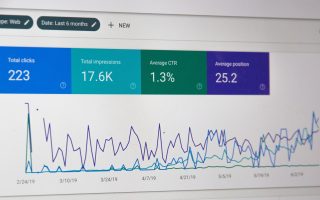International keyword research and localization are essential for any business looking to expand its online presence globally.
With the help of advanced tools and technologies, it has become easier to identify and target relevant keywords in different languages and regions.
One of these tools is ChatGPT, a language model trained by OpenAI.
In this blog post, we’ll talk about how to use ChatGPT for international keyword research and localization in SEO.
What is ChatGPT?
ChatGPT is an AI-powered language model that can be used for various natural language processing tasks. It’s designed to understand and generate human-like text, making it an excellent tool for content creation, chatbots, and other applications that require language understanding.
ChatGPT is a powerful tool that can help businesses identify relevant keywords in different languages and regions.
How to Use ChatGPT for International Keyword Research and Localization in SEO?
Identify the target language and region
Identifying the target language and region is the first step in international keyword research and localization using ChatGPT.
When businesses are expanding their online presence globally, it’s important to understand the languages and regions their target audience speaks and lives in. This will help businesses narrow down their research and focus on relevant keywords for their target audience.
For example, a business that wants to target French-speaking customers should focus on generating keywords in French. Similarly, if the business wants to target customers in Canada, they should focus on generating keywords relevant to the Canadian market.
This could include using Canadian-specific terms or phrases, such as “poutine” or “maple syrup” in their keyword research.
ChatGPT can help businesses identify relevant keywords in different languages and regions, but it’s important to identify the target language and region first. Without this information, businesses could generate irrelevant or low-traffic keywords, which can hurt their rankings and user experience.
Once businesses have identified the target language and region, they can use ChatGPT to generate relevant keywords that are specific to their target audience. This can help them improve their international SEO, increase their visibility and reach in different languages and regions, and attract more qualified traffic.
Use ChatGPT to generate relevant keywords
Once the target language and region have been identified, the next step in using ChatGPT for international keyword research and localization is to generate relevant keywords.
ChatGPT can help businesses generate relevant keywords in different languages and regions.
Here’s how businesses can use ChatGPT to generate relevant keywords:
To generate relevant keywords, you can use ChatGPT’s “Generate Text” feature. Simply enter the topic or keyword you want to target, along with the target language and region, and ChatGPT will generate a list of relevant keywords.
If you want to target the keyword “digital marketing” in French, you can enter “digital marketing” and select French as the target language. ChatGPT will then generate a list of relevant keywords in French, such as “marketing numérique,” “stratégie de marketing en ligne,” and “publicité en ligne.
- Choose a seed keyword: Start by selecting a seed keyword that is relevant to the business and its target audience. This could be a product, service, or topic related to the business.
- Input the seed keyword into ChatGPT: Once the seed keyword has been selected, input it into ChatGPT to generate additional keyword ideas. ChatGPT uses natural language processing to analyze the seed keyword and generate relevant keyword suggestions.
- Refine the keyword ideas: After ChatGPT generates the keyword ideas, businesses should review and refine them to ensure they are relevant to their target audience and align with their SEO goals. This may involve removing irrelevant keywords or adding new keywords that are specific to the business and its target audience.
- Translate the keywords: If the target language is different from the business’s primary language, it’s important to translate the keywords into the target language. This can be done manually or using a translation tool. It’s important to ensure the translated keywords are accurate and relevant to the target audience.
- Test the keywords: Once the keywords have been generated and translated, it’s important to test them using a keyword research tool. This will help businesses determine the search volume and competition for each keyword and prioritize the most relevant and high-traffic keywords for their target audience.
By using ChatGPT to generate relevant keywords in different languages and regions, businesses can save time and effort and improve the accuracy of their keyword research. This can help them improve their international SEO, increase their visibility and reach in different languages and regions, and attract more qualified traffic.
Analyze the generated keywords
Once you have generated a list of relevant keywords, it is essential to analyze them to determine their search volume and competition level.
This will help you prioritize your keywords and focus on the ones that are more likely to drive traffic and conversions. You can use various keyword research tools to analyze the generated keywords, such as Google Keyword Planner, Ahrefs, and SEMrush.
Here’s how businesses can analyze the generated keywords:
- Relevance: Check the relevance of the generated keywords to the business and its target audience. Remove any keywords that are irrelevant or too broad.
- Search volume: Use a keyword research tool to check the search volume of each keyword. Prioritize keywords with higher search volume as they are likely to attract more traffic.
- Competition: Check the competition level for each keyword using a keyword research tool. Prioritize keywords with low competition as they are easier to rank for.
- Intent: Analyze the intent behind each keyword. Make sure that the intent behind the keyword aligns with the business’s product or service.
- Localization: If targeting a specific region, check if the generated keywords are specific to the region. Ensure that the keywords are relevant to the region’s culture, language, and search behavior.
- Long-tail keywords: Consider adding long-tail keywords to the list. Long-tail keywords are more specific and have lower competition, making it easier to rank for them.
By analyzing the generated keywords, businesses can ensure that their international keyword research and localization efforts are aligned with their SEO goals and relevant to their target audience.
This can help businesses improve their international SEO, increase their visibility and reach in different languages and regions, and attract more qualified traffic.
Optimize your content for the targeted keywords
Once you have identified and prioritized your keywords, it’s time to optimize your content for them. This includes incorporating the targeted keywords in your content’s title, headings, meta tags, and body.
It’s important to use the keywords naturally and not stuff them in the content, as this can harm your rankings and user experience.
You can also create separate pages or sections of your website for different languages and regions, ensuring that your content is localized and relevant to your target audience.
Monitor your rankings and traffic
After optimizing your content, it’s important to monitor your rankings and traffic to see if your efforts are paying off. You can use various SEO tools to track your rankings and traffic, such as Google Analytics, Google Search Console, and SEMrush.
It’s important to regularly monitor your rankings and traffic and make changes to your strategy if needed to improve your results.
Benefits of using ChatGPT for International Keyword Research and Localization
Using ChatGPT for international keyword research and localization offers several benefits, such as:
- Saves time and effort: ChatGPT can generate a list of relevant keywords in different languages and regions within seconds, saving you time and effort.
- Improves accuracy: ChatGPT uses advanced natural language processing algorithms to generate accurate and relevant keywords, reducing the risk of targeting irrelevant or low-traffic keywords.
- Helps with localization: ChatGPT can generate keywords that are relevant to specific regions and cultures, helping businesses localize their content and improve their chances of ranking in local search results.
- Enhances international SEO: Using ChatGPT for international keyword research and localization can help businesses improve their international SEO, increasing their visibility and reach in different languages and regions.
- Increases conversion rates: By targeting relevant keywords in different languages and regions, businesses can attract more qualified traffic and increase their conversion rates.
Conclusion
International keyword research and localization are essential for businesses looking to expand their online presence globally.
Using ChatGPT, an AI-powered language model, can help businesses identify and target relevant keywords in different languages and regions.
By following the steps outlined in this blog post, businesses can use ChatGPT for international keyword research and localization in SEO, saving time and effort, improving accuracy, and enhancing their international SEO.
With the help of advanced tools and technologies like ChatGPT, businesses can increase their visibility and reach in different languages and regions, attracting more qualified traffic and increasing their conversion rates.




